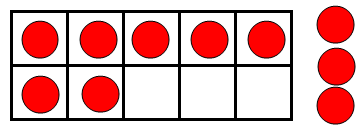Today marks the end of the module. There are basically 5 main core values of the module:
1) Visualisation
2) Number sense
3) Pattern
4) Communication
5) Meta cognition
Concrete Pictorial Abstract Approach were the main gees of it. The approach were supported by theorists Jean Piaget - theory of Assimilation and Accommodation, Vygotsy - Scaffolding, Jerome Bruner - three modes of representation and Dienes - theory of variability.
I learnt there are 3 questions we should always ask ourselves when planning a lesson:
1) What do you want children to learn? Focus on the learning instead of what you want children to do.
2) How do I know if the children understand what is being taught? (Based on assessments)
3) What if they can? What if they cant?
There are 4 teaching strategies which we should always remember:
Stage 1 - Demonstration. We model, we show examples.
Stage 2- We scaffold.
If the child is
unable to understand, then we move back to stage one which is demonstrate.
Stage 3 - We allow children to do it by themselves.
Stage 4 - If the children could not do it independently, we scaffold their learning again till they are able to do it independently.
Lastly, if the child is able to understand and do the concepts independently, we further extend their learning by moving to enrichment.
Why we do we have to do enrichment?
1) For learners who can do the concept taught independently
2) For struggling learners, who are almost there.
3) For weaker children to be exposed in a stimulating environment.
Children who are weaker will eventually go a step further when placed in a stimulating environment, learning from peers.
Thank you Dr. Yeap for the past 6 days. It had been an inspiring and enriching experiences. Looking forward to the next module in July. Take care! :)





